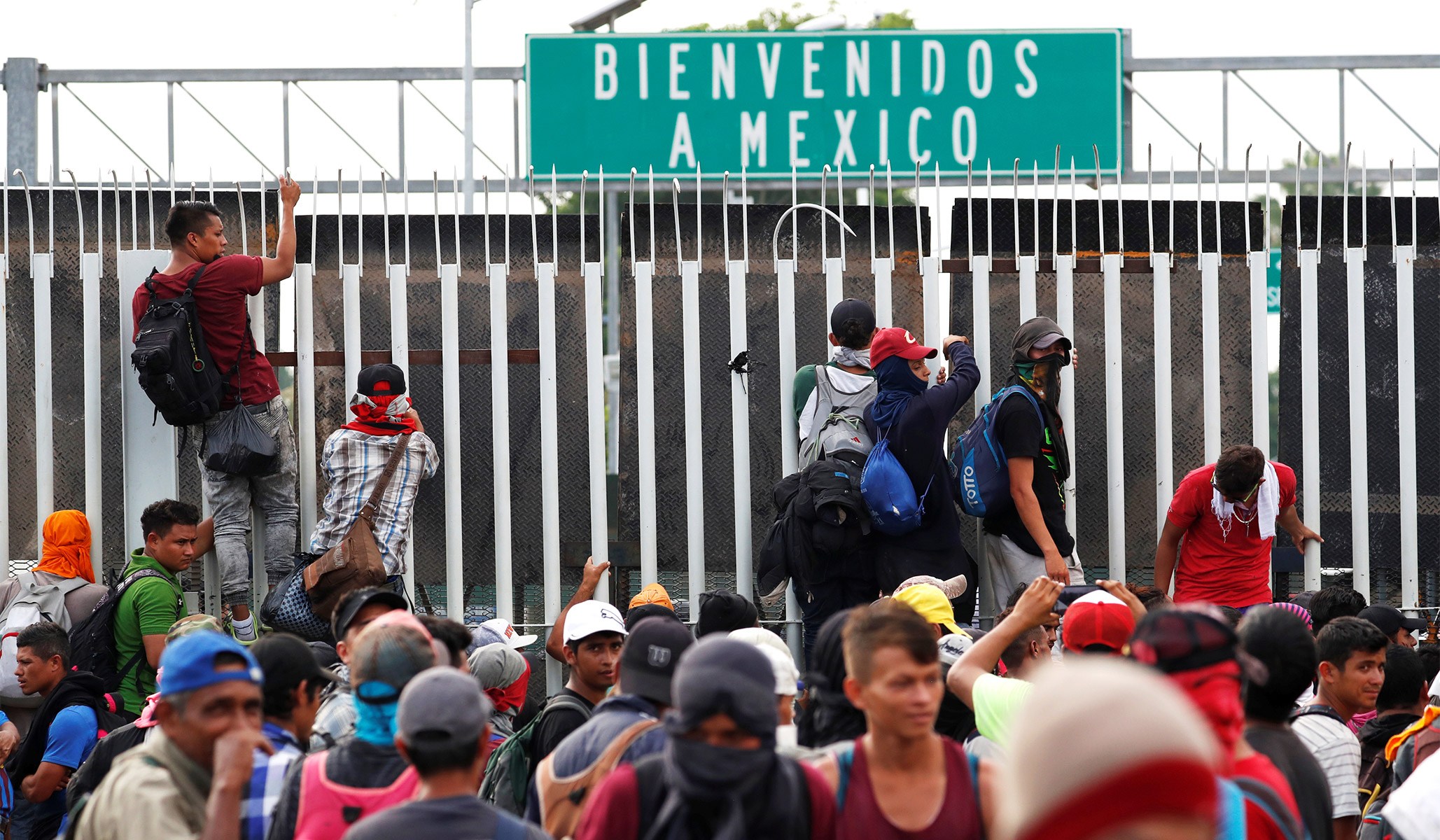By: Kevin D. Williamson – nationalreview.com – December 20, 2018
The Trump administration is committing billions of dollars to help Mexico engage in “institutional reform” to help stanch the flow of illegal immigrants from Central America into Mexico.
Mexican interior secretary Olga Sanchez Cordero tells the Associated Press that Mexico is sealing off its southern border, and that the laxity that invited the flood of illegal immigrants from Central America that crossed into Mexico in October “is no longer an issue.” Apparently, all that was required was the fiat of Mexico’s new president, Andrés Manuel López Obrador.
The $5.8 billion the Trump administration is promising to put up dwarfs the $20 million sweetener the United States offered Mexico back in September to step up its immigration enforcement.
The joke writes itself: Mexico is building a wall, and Trump is paying for it, having negotiated a price that is 290 times his opening bid.
¡El arte del trato!
The thing is: It’s a good idea.
Of course we are not funding a literal wall on Mexico’s southern border. Mexico already has one of those — not a coast-to-coast border wall but miles of fencing in and around populated areas and popular crossing points, rather like what exists on the U.S. border with Mexico and what will exist there irrespective of the outcome of the current debate about funding “the wall.” But the wall is not Mexico’s preferred instrument of immigration control — nor the one the U.S. government prefers for it. Under Programa Frontera Sur, a 2014 initiative supported by the United States, Mexico relies more on stepped-up police and military interdiction and internal checkpoints, a strategy that has led to a large increase in deportations.
It may be hard on the pride of some of our more enthusiastic neo-nationalists, but paying Mexico is a better policy than trying to wring money out of it for symbolic purposes — and the same is even more true for the poorer nations to Mexico’s south.
The fixation on a physical border wall is easy to understand, especially when you appreciate how little most of the people in Washington actually know about the physical and social conditions of the U.S.-Mexico border. A wall, once built, is a policy that is not easily undone, and that is attractive to the many millions of sovereignty-minded Americans who have been burnt too many times by bait-and-switch border deals: “I will gladly enforce Tuesday for an amnesty today.” Everybody knows how that goes, and those who believe that it is necessary to gain control over illegal immigration are right to be deeply suspicious of promises made as part of any grand bargain on immigration.
But the wall is mostly a case of symbolism over substance. There are places along the border where additional physical measures are sorely needed, and these should be built as quickly as possibly and as robustly as necessary — even if that means forcing a partial shutdown of the federal government over the funding. But there is not going to be a coast-to-coast wall, nor would such a thing be desirable. It would do a lot of things that we do not want it to do — among those is necessitating massive seizures of private property — and, worse, it would at the same time fail to do what we want it to do: stop the flow of illegal immigrants, most of whom today enter the United States through our airports on visas rather than wading across the Rio Grande. On illegal immigration, we are fighting the last war.
Illegal immigration is only one aspect of our complicated relationship with our economically and socially laggard neighbor to the south and with the Central American nations south of it. Mexico’s problems are North American problems, which means that they are American problems and Canadian problems, whether we like it or not. Maybe you do not much care about Mexico’s problems. That is understandable. But: The economic and social development of Mexico is the only real means of mitigating our Mexico problem.
The $5.8 billion the administration is committing to Mexico’s “Marshall Plan” for its Central American neighbors is a step in the right direction. In the short term, the priority of the López Obrador government is humanitarian relief and stabilization. In the long term, the priority is economic development and entrenching the rule of law. Expecting the Mexican government to lead the way on rule-of-law issues is a little bit like expecting Chris Wallace to dance the lead in the New York City Ballet’s all-Balanchine show this spring: It doesn’t exactly draw on what you’d call characteristic talents. Mexico is going to need support and resources, and it is in the best interests of the United States and Canada to take the lead in providing those.
It’s fine to sneer at U.S. foreign aid, much of which is simply a money-laundering operation for U.S.-based military contractors and other politically connected businesses. But progress in Mexico and in Central America is of real, immediate, and lasting interest to the United States: economically, politically, and socially.
The trick is seeing to it that we get our money’s worth, i.e., the ordinary business of working toward prudence and effectiveness in governance, the boring old stuff that nobody in Washington seems to be really interested in as they shout their banal slogans and throw their silly tantrums.
To see this article, click read more.
Source: Mexico’s Border Security & U.S. Foreign Aid — It’s a Good Idea to Help Mexico | National Review
 Listen Online
Listen Online Watch Online
Watch Online Find a Station in Your Area
Find a Station in Your Area









 Listen Now
Listen Now Watch Online
Watch Online
